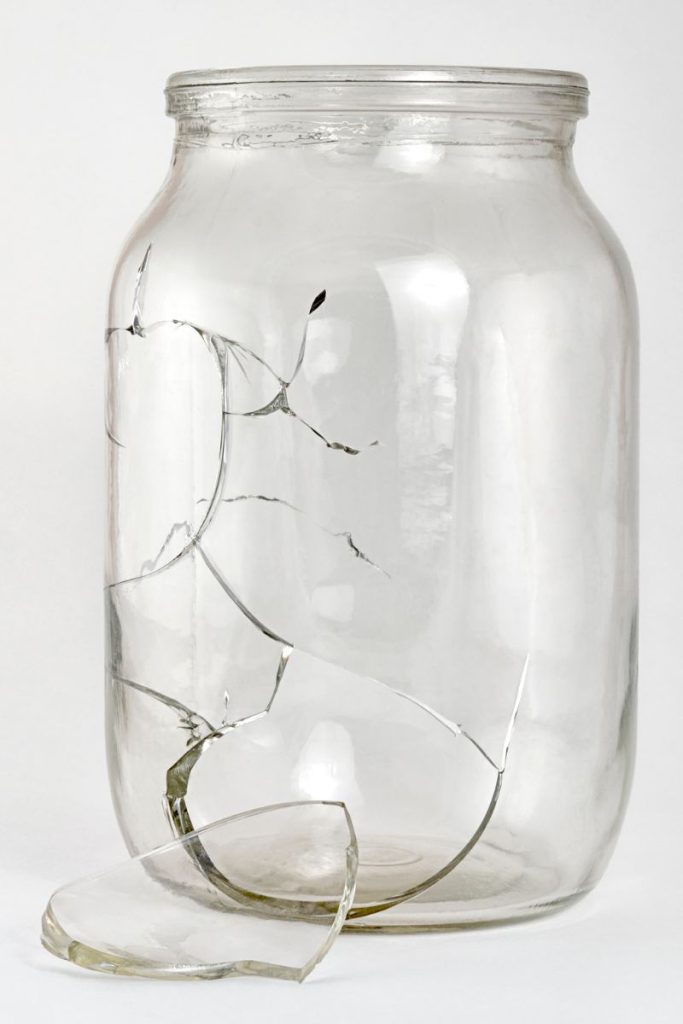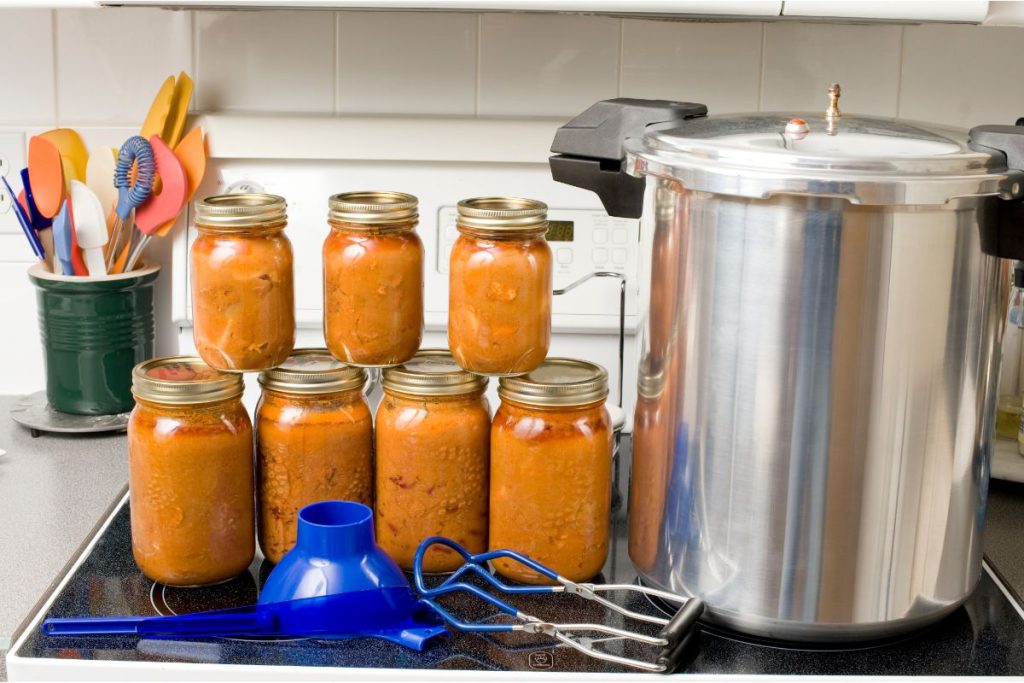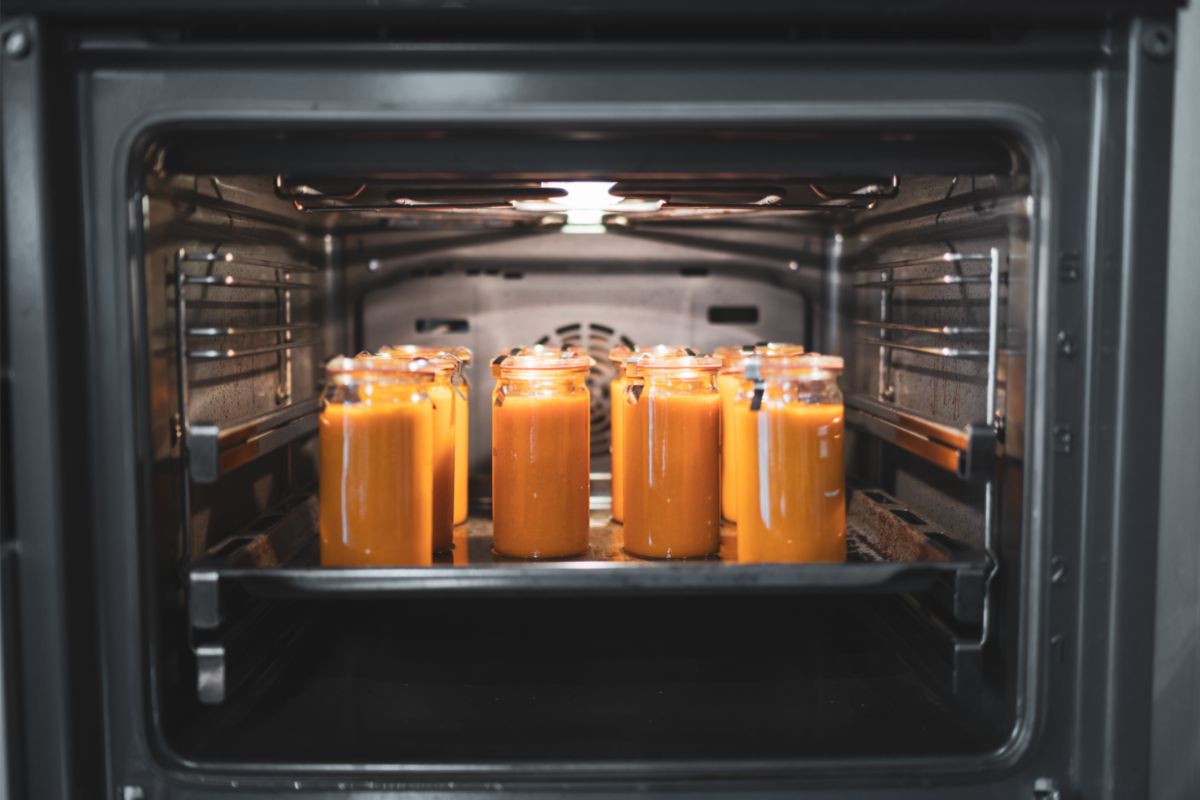Oven canning involves placing canning jars filled with freshly cooked food or dry goods into the oven and using dry heat for processing and sealing jars. Some people tout oven canning as an easy and quick way to preserve foods, while others advise against it because of safety concerns.
Oven Canning: The Debate
Oven canning is a highly debated canning method. Some home canners may support oven canning, but the USDA and the National Center for Home Food Preservation advise against oven canning.
Pros of Oven Canning
- Quick and easy: Oven canning is faster than other canning processes, including water bath canning.
- Convenient: Oven canning is more convenient than conventional canning methods because no special equipment is required.
- Shelf life: Oven-canned food can last for up to a year, depending on the food storage conditions and the type of food.
Cons of Oven Canning
- Safety concerns: Most authoritative government sources and food safety experts don’t recommend the oven canning method because it can allow botulism spores and other pathogens to thrive.
- Inadequate temperature: Heat transfer is uneven in an oven, so the food might not be subjected to high enough temperatures. The oven temperature is different from the temperature of the food inside the jars.
- Lids may not seal: Home canning lids are not designed for dry heat processing. The soft-sealing formulations like plastisol are engineered for moist heat applications. These include pressure canning and water bath canning.
- Oxygen saturation: The oven canning process doesn’t expel oxygen from the jar, as is the case with pressure canning and vacuum sealing, which can accelerate spoilage.
- Lack of studies: There are no research-backed guidelines for oven canning.
- Glass breakage: The risk of filled jars exploding in the oven is very high and can cause serious injuries.

What is the Difference Between Oven Canning and Stovetop Canning?
While both oven canning and stovetop canning use heat to sterilize and preserve food, there are some key differences between them.
Oven canning involves placing food in canning jars, wetting the rim, placing a canning lid on top, applying a screw band, and then leaving the jars in the oven for an hour. The idea is to extend the shelf life of fresh and dried goods.
Stovetop canning involves using a canner (large pot) to heat jars filled with food. The two recommended methods of stovetop canning are pressure canning and water bath canning.
Water bath canning uses a boiling water bath canner to help preserve high-acid foods, such as fruits, jams, and pickles. Pressure canning uses a dial gauge or weighted gauge pressure canner for canning low-acid foods, such as meats, soups, and vegetables.

What Types of Canning Jars are Safe for Oven Canning?
Traditional glass jars like mason jars or regular canning jars are not safe for oven canning.
It is important to choose jars that are specifically engineered for oven use. Weck jars and other reputable brands make tempered glass jars suitable for using in an oven.
How Long Do You Leave Canning Jars in the Oven?
There is no specific recommended time for oven canning, and the USDA advises against it because the temperature control in the oven is not good enough to destroy all harmful microorganisms.
What Temperature Does the Oven Need to Be for Oven Canning?
While oven canning is not recommended due to safety concerns, the oven temperature for oven canning should be between 250°F and 275°F.
Foods That May Be Safe for Oven Canning
Foods with a moisture content that is less than 10 percent may be safe for dry heat canning, including:
- Dehydrated foods
- Dry beans
- Freeze-dried foods
- Oatmeal
- Powdered milk
- Wheat
- White rice
Foods That Aren’t Safe for Oven Canning
Oven canning can reduce the shelf life of dry foods such as nuts, grains, pasta, and flour because exposing them to high heat can make them go rancid. Therefore, canning dry goods should not be attempted. For long-term storage of these products, try vacuum-sealing them and freezing them instead.

